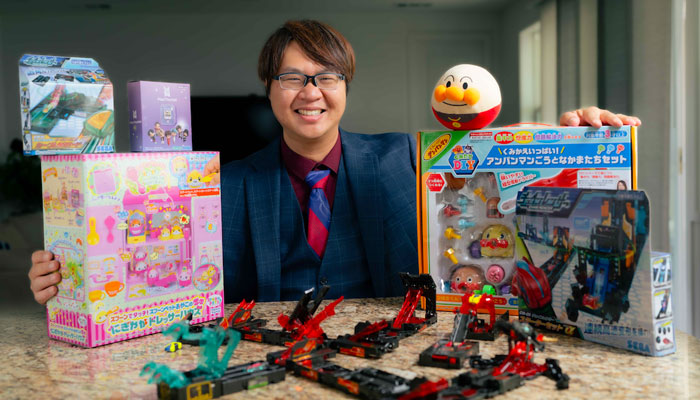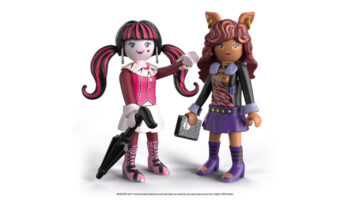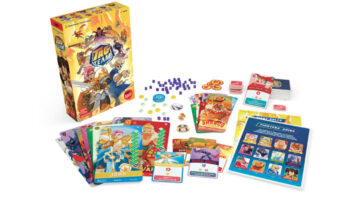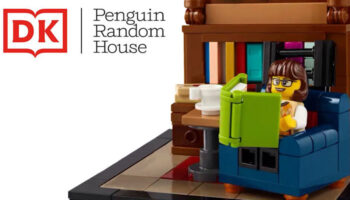From Bakugan to Purse Pets: SEGA Toys’ Vincent Imaoka on bringing Japanese toy innovation to the world

Vincent, it’s great to chat. To kick us off, when did the inventor arm of SEGA Toys start up?
SEGA Toys has really had an inventor arm since its early days when we were still known as Yonezawa Toys back in the mid-1900s. We’ve partnered with international companies throughout our history. One of the earliest concepts we licensed was a radio-controlled car called the Monogram Lightning – originally released as the Yonezawa Wave Hunter in Japan – that the company now known as Revell released in 1984.
We’ve since evolved into a true inventor division, with a dedicated team creating concepts to license to non-Japanese companies globally. We ourselves are a toy company though, so we release a number of toys in Japan independently also, which makes us very unique from other traditional inventors.
Can you talk us through some of SEGA Toys’ most notable inventions?
We have a number of long running inventions still in the US market. Our biggest one is probably Bakugan, which we licensed to Spin Master for international release. Through Spin Master’s partnership and global marketing, Bakugan continues to lead the battling toy category.

If we look back at our classic inventions, iDog was another invention that started the robotic animatronic trend in the mid-2000s. That was a toy where a futuristic looking robotic dog acts as an MP3 player by connecting an audio cable to a music device. The dog would dance and interact in different ways depending on the type of music being played.
That was released through Tiger Electronics in 2005, which then got absorbed into Hasbro who continued to release iDog until the 2010s. iDog is also notable as it was one of the first toys that went viral right when social media was ramping up.

The Yonezawa Wave Hunter, Bakugan, iDog… Are there any traits shared by your concepts that defines a ‘SEGA Toys idea’?
We’re a Japanese company, and therefore bring a unique Japanese design mindset to the way we create our concepts. Japan has always been a trendsetter for Western markets, so SEGA Toys being located in Tokyo allows us to be at the top of what’s trending in our market to then influence upcoming trends in international markets.
When we pitch to Western partners, our product stands out as having a very Japanese twist that Western designers aren’t used to. That helps to create more ideas, and through the partnership with the company we license to, our concept evolves to blend our original Japanese design with a Western design.
I wanted to ask about the wider Japanese toy inventor scene. How has it grown over the years? What should companies that are new to this community know about it?
We’re here to help! I think it’s easy for a lot of Western companies to forget that Japan holds a rich inventor community. Between the language and cultural barriers – along with Japan being on the other side of the globe for most Western companies – it can seem tough for those looking to source ideas from Japanese inventors… That said, our inventor community has always been collaborative in finding the concepts that work for any market. There have been so many major toy lines born out of Japan and we at SEGA Toys want to make sure that hasn’t been forgotten.
One recent launch from SEGA Toys is Purse Pets with Spin Master. Can you talk us through the origins of that idea and how it developed?
Purse Pets is the perfect example of how we’re able to act as a traditional inventor house. This concept was conceived internally at SEGA Toys, then we pitched it over to Spin Master. The Spin Master design team was a great partner as they immediately saw the novelty behind the concept which combined fashion with traditional animatronic pet play. The overall design really didn’t change from our initial pitch.

Away from some of SEGA Toys’ high profile launches, what would you say is the team’s most underrated invention?
It was very big in the mid-2000s, but many forget that Aquapet is from SEGA Toys. We licensed that concept to Wild Planet at the time, who released the product globally. This was another toy that was viral despite marketing being limited – and it almost kicked off the STEM/STEAM category that’s so prominent now. That line ran for almost a decade! We always bring that up now and then when we introduce SEGA Toys to partners, and everyone’s always surprised that Aquapet was a SEGA Toys invention.

Vincent, this has been great. Before I let you go, I wanted to ask, how does SEGA Toys fuel its creativity? What helps the team have ideas?
Our design team is made of trend-driven talent. We do studies, read articles and have our eyes on social media – not only within Japan, but globally. Once again, Japan has been the trendsetter for Western markets, and us being located in Japan helps us stay on top of possible trends that will hit Western countries in a year or two time. That helps our team ideate on different play patterns, see what’s up-and-coming in terms of possible trends, and innovate on new mechanisms. We have fun in creating our concepts, and we encourage our design teams to explore their hobbies and interests when creating their new concepts.
Fantastic. Thanks again!
–
To stay in the loop with the latest news, interviews and features from the world of toy and game design, sign up to our weekly newsletter here






















